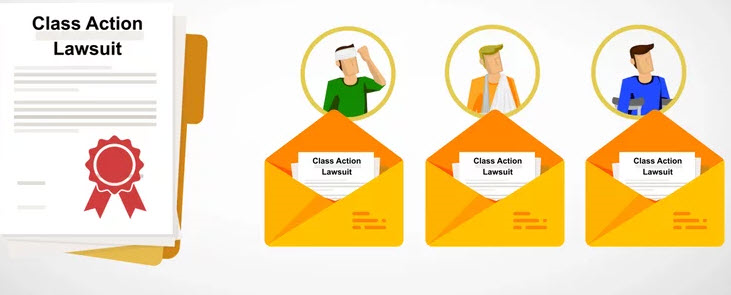Recognizing Class Activity Legal Action: An Overview for Attorney
Class activity suits have actually ended up being an integral part of the legal landscape, permitting the debt consolidation of several claims into a single activity. For attorneys, comprehending the complexities of course activity litigation is crucial in effectively representing their customers. This thorough guide explores the basics of course activity legal actions, from recognizing potential course members to browsing the certification procedure. Furthermore, it explores key techniques for handling course activity lawsuits and provides understandings right into getting and working out authorization for settlements. By delving into the details of course action claims, this guide furnishes attorneys with the knowledge and devices required to effectively browse this intricate area of legislation.
The Fundamentals of Course Action Claims
Class activity lawsuits are a legal mechanism used to settle similar insurance claims from a group of people right into a single suit, giving a efficient and cost-efficient method to seeking justice and resolution. This sort of suit allows a representative plaintiff, acting on behalf of the whole class, to bring a claim versus a defendant who has actually allegedly caused harm or broke the civil liberties of numerous people.
The standard requirements for bringing a class action claim include numerosity, commonness, typicality, and competence of representation. Numerosity refers to the truth that the class should be so big that joinder of all members would be not practical. Commonality means that there must prevail concerns of law or fact that are shared by all members of the class. Typicality requires that the claims of the depictive complainant are normal of the insurance claims of the entire course. Competence of depiction guarantees that the representative plaintiff will adequately stand for the rate of interests of the entire class.
Class action lawsuits can be beneficial for both complainants and defendants. For accuseds, it uses the chance to successfully resolve multiple cases in a single legal action, avoiding the demand to protect against countless individual lawsuits.
Identifying and Assessing Prospective Class Participants
After developing the fundamental demands for a class activity suit, the following action is to determine and evaluate prospective class members. This process includes identifying that might belong to the class and examining their claims to identify if they meet the essential criteria.
To recognize prospective class participants, legal representatives generally conduct comprehensive research and gather pertinent information. This may involve examining records, conducting interviews, and taking a look at documents to determine people or entities that might have been impacted by the supposed misbehavior. It is essential to establish a clear and thorough checklist of potential class members to guarantee that all influenced parties are consisted of in the claim.
When possible course participants have been recognized, the next action is to examine their claims. If they satisfy the legal demands for course qualification, this involves evaluating the benefits of each private insurance claim to figure out. Attorneys must very carefully assess the facts, evidence, and lawful concepts of each possible class participant's case to guarantee that they have a viable situation.
Examining prospective course members additionally includes identifying whether they meet the course meaning and have actually suffered similar injury as an outcome of the defendant's actions. This calls for comparing the realities and circumstances of each prospective class participant's situation to the claims and lawful concepts presented in the legal action.
Navigating the Course Qualification Process
To effectively browse the course accreditation procedure, attorneys should vigilantly stick to the step-by-step needs stated by the court. Class certification is an essential action in a course activity legal action, as it determines whether a case can proceed as a class action, representing a group of individuals that have comparable cases versus an offender. The procedure entails pleasing certain requirements, such as numerosity, commonness, typicality, and adequacy of representation.
Firstly, legal representatives need to establish numerosity by showing that the class is so large that specific joinder is not practical. This needs a comprehensive evaluation of the defenses and claims entailed.
Next, legal representatives should show typicality, which indicates that the representative complainant's claims are regular of the insurance claims of the course members. This ensures that the passions of the representative complainant align with the passions of the class. Last but not least, attorneys have to demonstrate competence of representation, suggesting that the representative complainant and their counsel will rather and effectively represent the passions of the class.
To browse this process effectively, legal representatives need to thoroughly prepare by conducting extensive research, gathering proof, and establishing an dig this engaging debate that satisfies each of these criteria. They need to additionally be prepared to reply to any type of difficulties or arguments raised by the offender. By faithfully adhering to the procedural demands set forth by the court, legal representatives can raise their chances of obtaining class accreditation and progressing the passions of the course participants.

Key Methods for Managing Class Activity Lawsuits
Upon effectively browsing the course certification process, legal representatives must then apply key techniques for properly managing class action lawsuits. These approaches are essential to make sure that the case proceeds smoothly and effectively, inevitably taking full advantage of the opportunities of a desirable outcome for the class members.
One secret method is to develop a solid and natural legal team (Class action lawsuit). This involves putting together a group of attorneys with experience in course action litigation, as well as other relevant locations such as the specific industry or topic associated with the case. A well-rounded team can bring different perspectives and abilities to the table, boosting the overall performance of the litigation
One more essential approach is to establish a well-thought-out and thorough lawsuits plan. This plan needs to describe the total purposes of the case, as well as the particular lawful theories and arguments that will certainly be gone after. It needs to likewise consist of a timeline and budget plan to ensure that the situation remains on track and within the designated recommended you read resources.
Furthermore, legal representatives must actively engage with the course members throughout the lawsuits process (Class action lawsuit). This consists of offering regular updates on the development of the situation, looking for input and comments from the course members, and dealing with any worries or questions they might have. By fostering open communication and cooperation, attorneys can read here construct count on and assistance among the course participants, which can be critical in attaining an effective resolution
Clearing Up Course Action Lawsuits: Negotiation and Authorization
When it involves clearing up course action lawsuits, efficient arrangement and acquiring authorization are vital steps in accomplishing a resolution. Course action legal actions are complicated and involve a lot of complainants, making it essential to get to a settlement that is fair and satisfactory to all celebrations entailed.

When a settlement arrangement is reached, it must be authorized by the court. The court's role in this process is to ensure that the settlement is reasonable, sensible, and properly protects the interests of the course members. The court will think about factors such as the nature of the claims, the toughness of the evidence, the possible recovery for the class members, and any kind of objections raised by class members.
Obtaining court approval is essential as it supplies finality to the settlement and safeguards the passions of the class participants. It guarantees that the negotiation is binding and enforceable, and class members can get their rightful settlement.
Conclusion

Course action legal actions have become an indispensable part of the lawful landscape, allowing for the consolidation of several claims right into a single activity. Course accreditation is a crucial action in a class action legal action, as it figures out whether a case can proceed as a course activity, standing for a group of people that have similar cases against an offender. By diligently adhering to the step-by-step needs established forth by the court, legal representatives can enhance their chances of obtaining class certification and progressing the interests of the course members.
The court will certainly consider aspects such as the nature of the insurance claims, the toughness of the evidence, the potential recovery for the course participants, and any type of arguments elevated by course participants.
By identifying and assessing prospective class members, legal representatives can identify the stability of a class action claim.